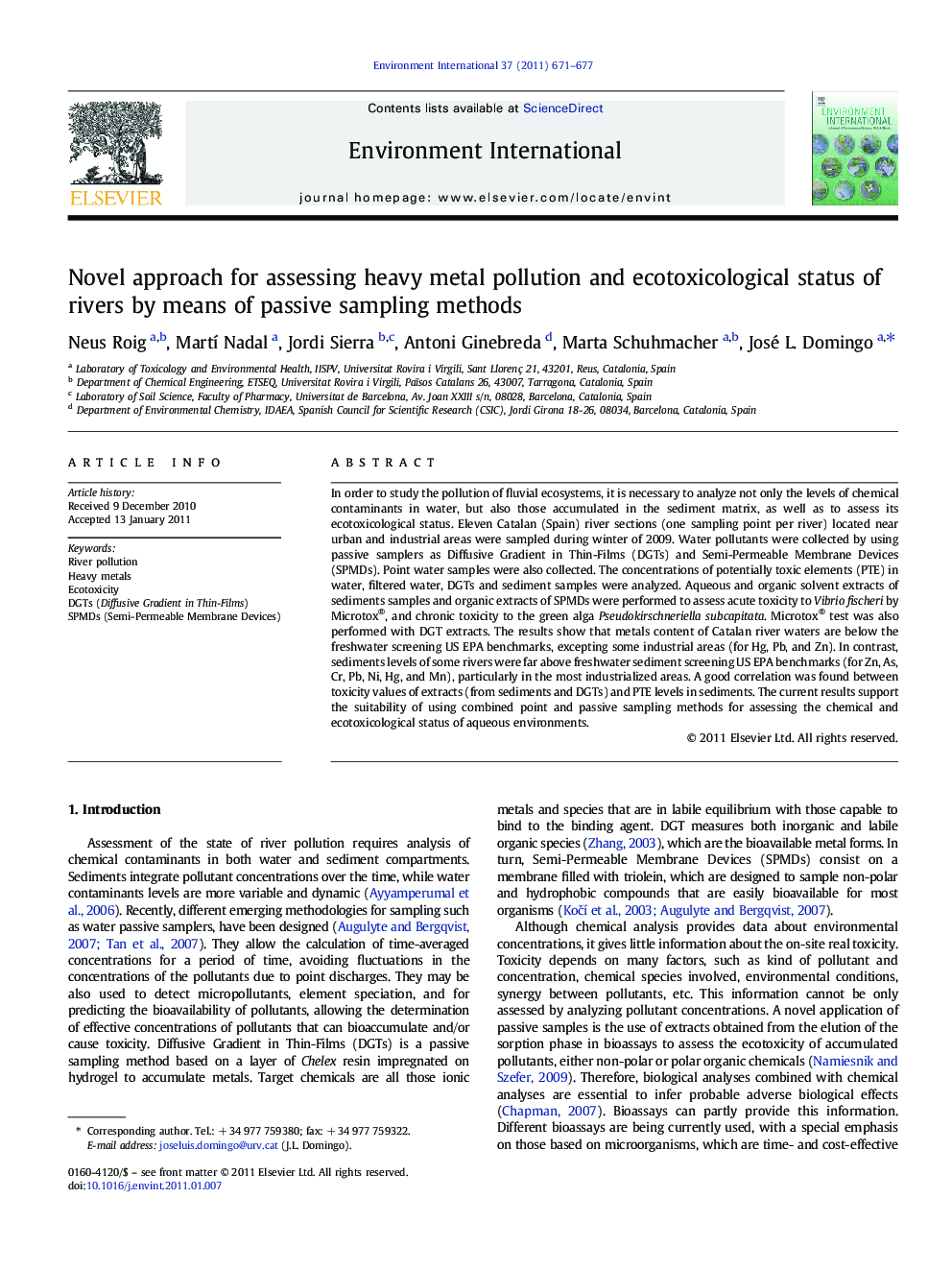| Article ID | Journal | Published Year | Pages | File Type |
|---|---|---|---|---|
| 4423408 | Environment International | 2011 | 7 Pages |
In order to study the pollution of fluvial ecosystems, it is necessary to analyze not only the levels of chemical contaminants in water, but also those accumulated in the sediment matrix, as well as to assess its ecotoxicological status. Eleven Catalan (Spain) river sections (one sampling point per river) located near urban and industrial areas were sampled during winter of 2009. Water pollutants were collected by using passive samplers as Diffusive Gradient in Thin-Films (DGTs) and Semi-Permeable Membrane Devices (SPMDs). Point water samples were also collected. The concentrations of potentially toxic elements (PTE) in water, filtered water, DGTs and sediment samples were analyzed. Aqueous and organic solvent extracts of sediments samples and organic extracts of SPMDs were performed to assess acute toxicity to Vibrio fischeri by Microtox®, and chronic toxicity to the green alga Pseudokirschneriella subcapitata. Microtox® test was also performed with DGT extracts. The results show that metals content of Catalan river waters are below the freshwater screening US EPA benchmarks, excepting some industrial areas (for Hg, Pb, and Zn). In contrast, sediments levels of some rivers were far above freshwater sediment screening US EPA benchmarks (for Zn, As, Cr, Pb, Ni, Hg, and Mn), particularly in the most industrialized areas. A good correlation was found between toxicity values of extracts (from sediments and DGTs) and PTE levels in sediments. The current results support the suitability of using combined point and passive sampling methods for assessing the chemical and ecotoxicological status of aqueous environments.
Research Highlights► Passive sampling methods give additional information to point water samples. ► Toxicity indexes can be inferred by combining passive samplers and sediments. ► Passive samplers allow assessing the toxicity of bioavailable pollutant fractions. ► Some Catalan (Spain) rivers show an important anthropogenic impact.
